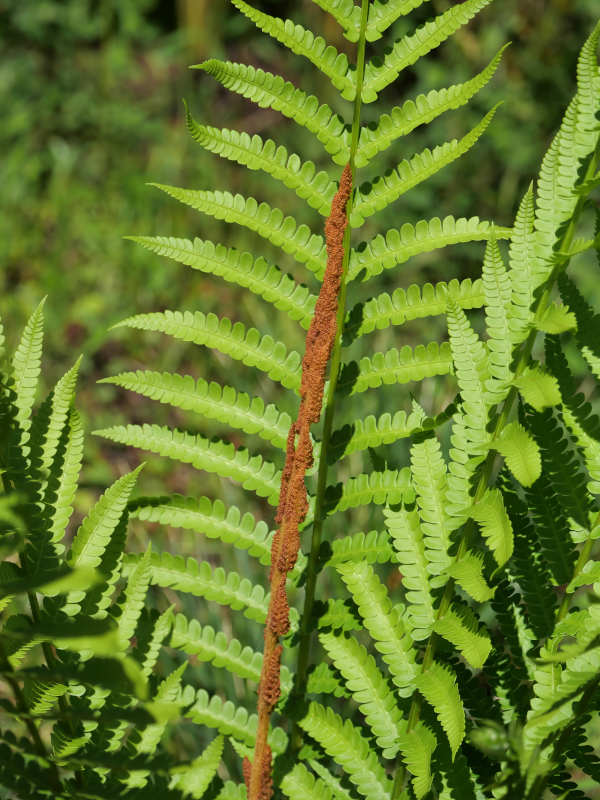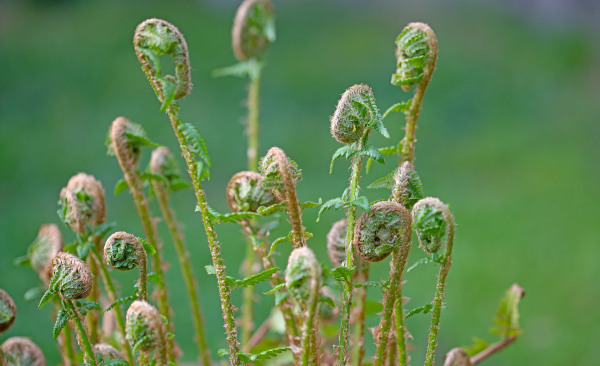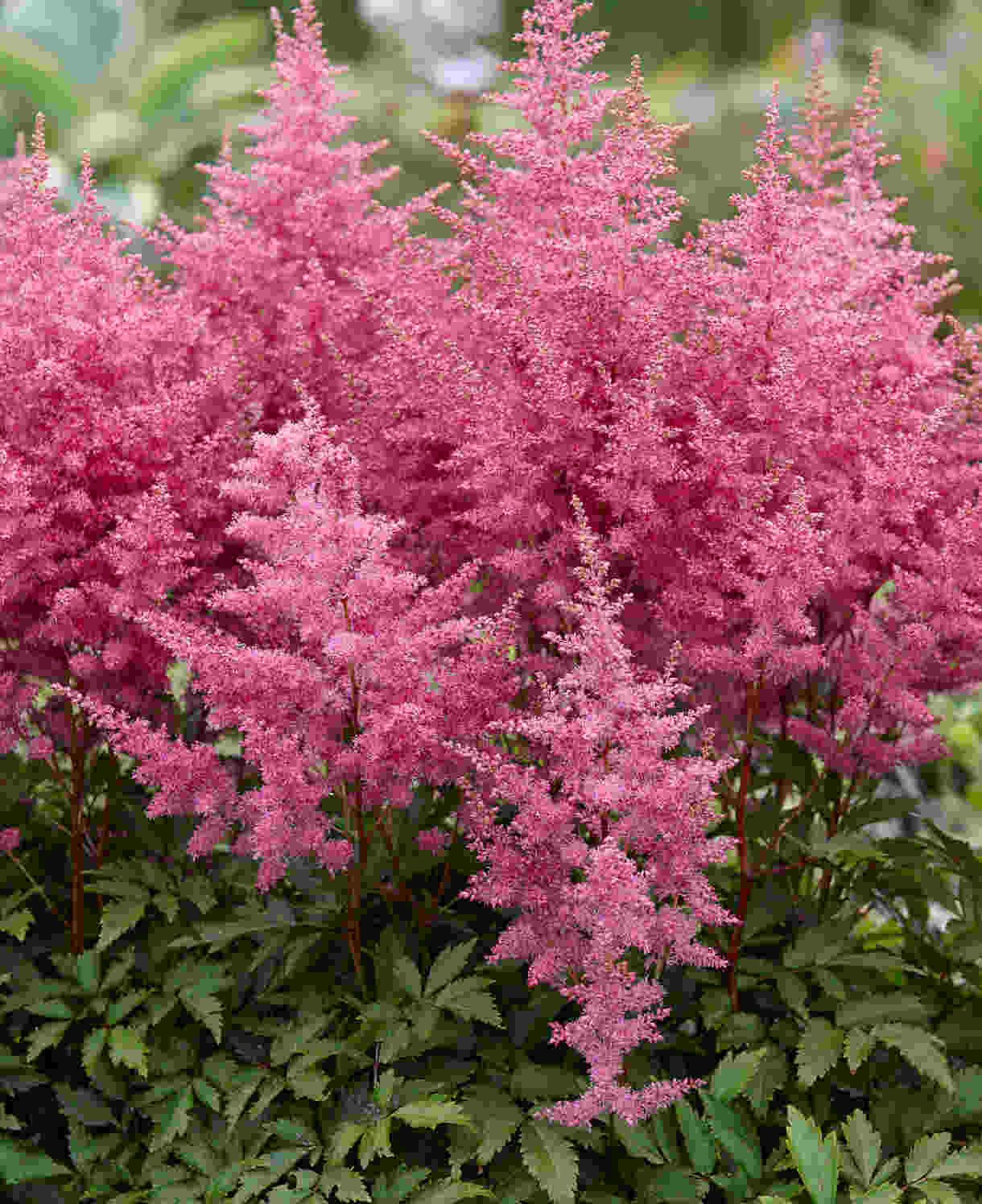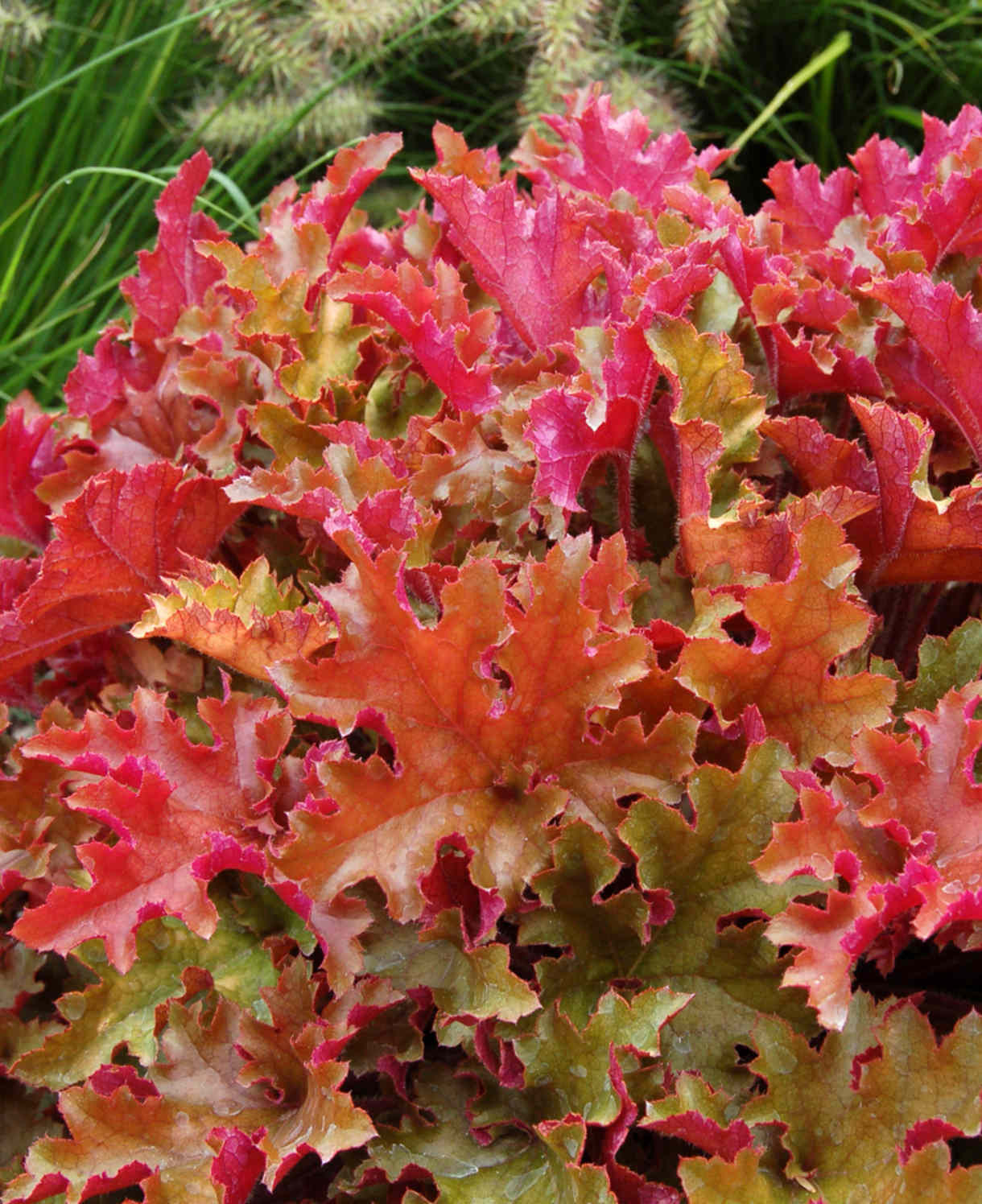How to grow Osmunda
Often known as the Royal Fern as well as other more comical names such as Bog Onion, Rusty Fern or Buckhorn Brake. This is a robust, deciduous fern which grows into large clumps of bipinnate fronds as tall as 2.5 metres with a 4 metre spread in 5 to 10 years! Large fronds emerge and unfurl in April, lasting through until October time – turning to an attractive red brown colour in autumn before dying back below ground over winter. This statuesque fern may also bear reddish brown spore-bearing pinnae which not only add interest but offer the promise of even more ferns as they naturalise.
Osmunda Regalis likes to be planted in any moist, well-drained or even poorly drained soil so sandy soils are best avoided. Prefers and acid to neutral pH of any aspect and they adapt well to sun or shade as long as the ground remains moist. A UK native which is hardy to H6 (-15 to -20°C) plants do not need any additional winter protection in the UK.

Zantedeschia is a genus of flowering plants from the family Araceae and is native to southern Africa. With a rich history dating back to the Ancient Romans, these deciduous or semi-evergreen perennials have been used as a symbol of celebration. Zantedeschia was Named after Professor Giovanni Zantedeschia, an Italian botanist.
There are two main forms of Zantedeschia: hardy and tender. Hardy forms of the plant can be grown outdoors, enjoy moist soil and full sun or partially shaded conditions - these are known as Arum lilies. Tender forms of Zantedeschia prefer being grown in containers or pots and should be brought inside over the winter - these are known as Calla lilies.
With tuberous flora in all colours from whites, yellows and oranges to deep reds and purples, Zantedeschias are not to be overlooked in any garden, as long as they have sufficient sunlight to grow in.
Ready to learn more about growing Zantedeschia? Read on for all there is to know...

Key Information
Soil pH
Position
Hardiness


Where & when to plant Osmunda
Position- Sun or shade
Soil- Moist, fertile and well-drained or poorly drained
Season of interest- Spring, summer & autumn
Hardiness- Hardy (H6)
Osmunda Regalis ferns are typically characterised by tall, large fronds and wonderful autumn colour. Easy to grow in most cool, moist, lightly shaded sites and will grow in full sun if given plenty of moisture. Useful for wetter sites which need cover and a fantastic way to add lush, low maintenance groundcover to unsightly areas. Plants will last for several years and are easy to propagate too.
Osmunda Regalis should ideally be planted in spring or autumn and although relatively robust an exceptionally exposed or windy site is best avoided as fronds may be damaged.
Soil, which is moist, well-drained and rich in organic matter is best for this fern to thrive although as its common name, Bog Onion, suggests it is happy in damp ditches too.
How to plant Osmunda
To plant, dig a hole a little deeper and wider than your potted Osmunda Regalis and add plenty of leaf mulch to the base of the planting hole to enrich the soil and add essential nutrients. Carefully tease your plant from its pot and gently loosen the roots before placing it into the hole with the crown just below soil level. Add some loosened garden soil around the sides of the plant before firming into place and watering generously.
Osmunda Regalis also grow well in pots – use a good quality compost with added leaf mould and ensure pot grown plants can drain freely but never dry out.

What to plant with Osmunda
Osmunda Regalis ferns are perfect plants for woodland gardens or shady borders where they will naturalise easily in the right growing conditions. Their large, lush foliage makes them perfect for creating a jungle-like garden or a lush dell near a stream. Fronds add texture and can transform a dull, shady area into a verdant paradise.
Shade loving plants which share the same growing conditions make the best companions for these ferns. Choose from plants such as; Astilbe, Epimedium, Hosta, Liriope muscari and Heuchera



How to care for Osmunda
Water your young Osmunda Regalis well, at least twice a week, until they have established themselves and thereafter only during periods of very dry weather. As long as you have planted these ferns in a shady spot, the soil should remain moist enough for the roots to find a constant water source.
A mulch of leaf mould in autumn, several inches thick will feed the soil and help to ensure next year’s growth will be even more lush. Remove the dead or damaged foliage at the base of your plants either in winter, if you prefer a clear site, or in spring to make way for newly emerging fronds. For less hardy ferns foliage is best left to offer a degree of protection to the plant’s crown over winter.
How to propagate Osmunda
Osmunda Regalis can be grown from the mature spores found on the underside of the fronds or on the pinnae, but they can be tricky to germinate and very slow to grow. The easiest and most reliable form of propagation is by division.
We recommend dividing your ferns in spring before the coiled new shoots begin to unfurl.
The roots of Osmunda Regalis will spread readily underground over the years as your ferns naturalise within their growing space. Dividing the clumps will help to maintain the vigour of your plants as well as increasing your stock for planting in other parts of the garden or sharing with friends and family.
Dig new planting holes and add handful or two of leaf-mould to each if you are replanting the new sections of your ferns immediately. Alternatively, have pots with good quality, humus-rich compost ready to plant the new divisions into.
Dig carefully and deeply around your established fern with a garden fork and remove the entire plant, or clump of plants. Separate each plant into 3 or more sections by hand if possible or using two garden forks back to back and prising them apart. Ensure you have a few fronds attached to each section of roots. You may need to use a sharp knife or a saw to cut through the roots if they are tough or congested.
Plant your new divisions into their holes or pots and water well for a few weeks until they have settled in.
Common Osmunda questions
Is osmunda evergreen?
No, it is an herbaceous perennial so the foliage will fade and die around November time and then return, reinvigorated the following spring.
Is osmunda a perennial?
Yes, your Osmunda Regalis should last for years, particularly if reinvigorated every few years by division.
Do royal ferns spread?
Yes, the have a maximum spread of 4 metres, with a minimum of 2 metres over around 5years. Size can be kept small by dividing your plants every couple of years.





